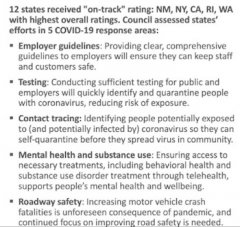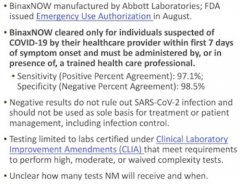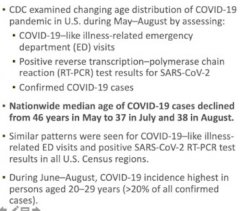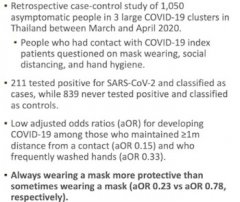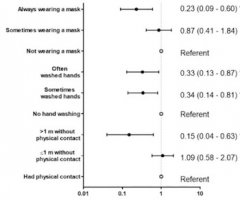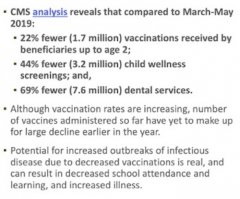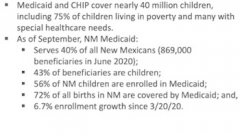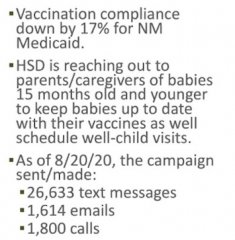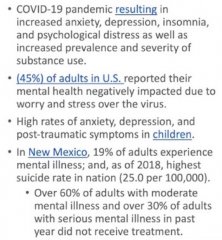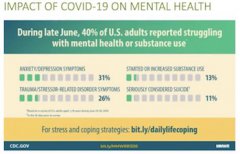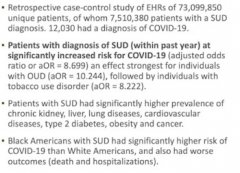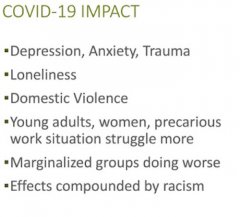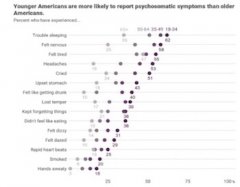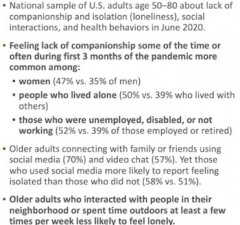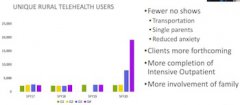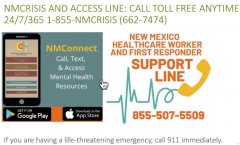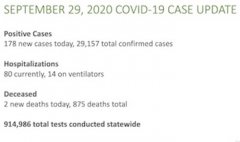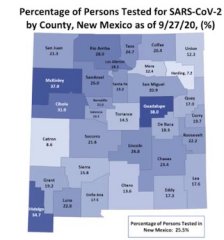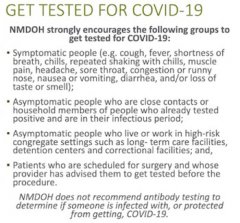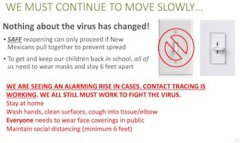scrase092920
scrase092920
The National Safety Council rates New Mexico as a "dark green" state, indicating the state is monitoring cases adequately.
https://www.grantcountybeat.com/images/2020newsitems/scrase092920/scrase092920-01_copy.jpg
scrase092920
BinaxNOW is a test that can be utilized by providers, in addition to other testing.
https://www.grantcountybeat.com/images/2020newsitems/scrase092920/scrase092920-02_copy.jpg
scrase092920
The average age of those infected with the virus has declined substantially.
https://www.grantcountybeat.com/images/2020newsitems/scrase092920/scrase092920-03_copy.jpg
scrase092920
Data reflects COVID-safe behaviors as effective in limiting transmission.
https://www.grantcountybeat.com/images/2020newsitems/scrase092920/scrase092920-04_copy.jpg
scrase092920
A visual representation of how behaviors are helping mitigate the spread of the virus.
https://www.grantcountybeat.com/images/2020newsitems/scrase092920/scrase092920-05_copy.jpg
scrase092920
Nationwide, there is a decrease in the vaccination of children and well child visits.
https://www.grantcountybeat.com/images/2020newsitems/scrase092920/scrase092920-07_copy.jpg
scrase092920
Medicaid data is a good predictor of the trend in children's health care.
https://www.grantcountybeat.com/images/2020newsitems/scrase092920/scrase092920-08_copy.jpg
scrase092920
The Human Services Department is reaching out to help increase vaccinations and well-child visits.
https://www.grantcountybeat.com/images/2020newsitems/scrase092920/scrase092920-10_copy.jpg
scrase092920
There has been and increase in mental health issues since the onset of the pandemic.
https://www.grantcountybeat.com/images/2020newsitems/scrase092920/scrase092920-12_copy.jpg
scrase092920
The impact has been evidenced in more than one type of mental health area.
https://www.grantcountybeat.com/images/2020newsitems/scrase092920/scrase092920-13_copy.jpg
scrase092920
Outcomes of COVID-19 tend to be worse when coinciding with substance abuse disorders.
https://www.grantcountybeat.com/images/2020newsitems/scrase092920/scrase092920-14_copy.jpg
scrase092920
COVID-19 seems to be heightening multiple issues.
https://www.grantcountybeat.com/images/2020newsitems/scrase092920/scrase092920-15_copy.jpg
scrase092920
Younger folks are having more difficulty coping with the effects of COVID-19.
https://www.grantcountybeat.com/images/2020newsitems/scrase092920/scrase092920-17_copy.jpg
scrase092920
Isolation and is contributing to loneliness.
https://www.grantcountybeat.com/images/2020newsitems/scrase092920/scrase092920-18_copy.jpg
scrase092920
There has been a dramatic increase in the use of telehealth as an option to meet with providers.
https://www.grantcountybeat.com/images/2020newsitems/scrase092920/scrase092920-20_copy.jpg
scrase092920
New Mexicans are reminded to use the crisis and access line as a resource.
https://www.grantcountybeat.com/images/2020newsitems/scrase092920/scrase092920-21_copy.jpg
scrase092920
The case update for September 29, 2020 - day 203 of the pandemic.
https://www.grantcountybeat.com/images/2020newsitems/scrase092920/scrase092920-22_copy.jpg
scrase092920
Percentages of those tested, by county.
https://www.grantcountybeat.com/images/2020newsitems/scrase092920/scrase092920-24_copy.jpg
scrase092920
Get tested if you have symptoms, and when you have come in contact with someone who has tested positive.
https://www.grantcountybeat.com/images/2020newsitems/scrase092920/scrase092920-25_copy.jpg
scrase092920
A gentle reminder that to stay vigilant so more of the state can open.
https://www.grantcountybeat.com/images/2020newsitems/scrase092920/scrase092920-26_copy.jpg
By Hallie Richwine
Human Services Department Cabinet Secretary Dr. David Scrase opened the latest COVID session on Sept. 29, 2020 by sharing that the National Safety Council picks New Mexico as one of the dark green states, for "doing what a state should be doing," he said.
He also addressed questions around BinaxNOW, a rapid testing product to detect COVID-19. Scrase said it can be used in a clinical setting by a trained healthcare professional, but at this point only in conjunction with the regular testing protocol. "The benefit here is getting a rapid answer," he said. "That's a substantial benefit." Scrase did mention New Mexico's fast turnaround of test results. The state lab can get results in under six hours, which is among the best in the country.
National data is showing greater numbers of cases among younger people. "The average age has declined substantially," Scrase said.
Data also reiterates the efficacy of wearing masks, social distancing, and hand washing. Scrase shared a visual representations of those COVID-safe behaviors, and where they were employed, folks tended to avoid becoming infected (see slideshow above).
One point that Scrase mentioned multiple times was the decline in child immunizations and wellness screenings. "Vaccination rates this year are about 22% lower than previous years," he said. Medicaid has been a tool in predicting the data regarding children's preventative health measures as they report directly to Health and Human Services, whereas private insurance only updates such figures on an annual basis.
With rates being low, especially during the pandemic, Health and Human Services is trying to reach out to families to schedule the appropriate care.
"When it comes to vaccinations, we have obliterated some diseases," Scrase said. "We know lack of dental care in general can make other health conditions worse." He said it is important not to delay treatment of any sort.
Behavioral Health Services Division Director Dr. Neal Bowen gave an update on mental health during the pandemic. "There are three basic messages," he said. "One, there is a very solid body of literature about the impact of COVID-19 on behavioral health, and that surge will strain mental health professionals." He said the second point is that COVID-19 has a wide range of impacts on behavioral health, and that lastly the availability of services through telehealth has increased.
"Remember, access to care through the emergency department is not the preferred way to receive care," Bowen said. Further, "waiting for care when you're feeling anxious and depressed leads to more difficult care later."
Bowen said there are worse outcomes of COVID-19 if they coincide with substance abuse disorders, and that most issues will be exacerbated during the pandemic.
Additionally, isolation is affecting mental health during the pandemic. Bowen said this is because human contact is crucial for well-being. "People who have the least social contact are more likely to experience loneliness," Bowen said. He also said they are more likely to not eat a healthy diet, and eating well is part of taking care of yourself.
Even though mental health issues are increasing, so is the ease of getting help via telehealth options. This leads to better productivity among the mental health professionals, https://www.cdhfinechemical.com/cdh_data/xanax-alprazolam/ with less no-shows and an absence of transportation issues.
"Get the help if you feel like you need it," Bowen said. "Use the crisis and access line." People are there to listen to concerns and facilitate access to local providers. "It's a great call to make if you are unsure or feel as though you'd like some support."
The last part of the presentation was Scrase reviewing the gating criteria. "There has been a slight uptick in the amount of hospitalizations," he said. Other trends include increases in positivity rates, especially in those areas along the Texas border.
As of September 29 the transmission rate in New Mexico was 1.25, slightly higher than the goal of 1.05. This will keep that portion of the gating criteria in the red.
"Get tested," Scrase said. "Test positivity rate directly affects safely opening schools and nursing homes."
As always, Scrase said the option to open the state is more like a slider than a switch.
Don't forget, modeling and epidemiological reports are available at cv.nmhealth.org.
